Blue Eyed Mary, Spring Blue-eyed Mary, Eastern Blue Eyed Mary, Innocence, Lady-by-the-Lake - Collinsia verna
|
Collinsia verna - Blue Eyed Mary, Spring Blue-eyed Mary, Eastern Blue Eyed Mary, Innocence, Lady-by-the-Lake.
While many publications still list the Collinsia genus in Scrophulariaceae - the Figwort family (aka Snapdragon family) - it has more recently been classified within the Plantains - Plantaginaceae.
Most of the Collinsia species are found in the western part of the United States. Collinsia verna is one of only a couple found in the east, and this is the only one with widespread distribution in the east. This species is native to Tennessee, but the plants photographed here are from a long-naturalized population in Hamilton County, TN. The USDA Plants Database doesn't list it as found in Alabama, but the Alabama Plant Atlas, published by the Alabama Herbarium Consortium and The University of West Alabama do list it in Colbert County in northwest Alabama. The genus is named for Zacchaeus Collins, an early 19th-century botanist.
Found in:
AL, AR, IA, IL, IN, KS, KY, MI, MO, NY, OH, OK, PA, TN, VA, WI, WV
Leave comments on Collinsia verna at this link. | 
Distribution of Collinsia verna in the United States and Canada:
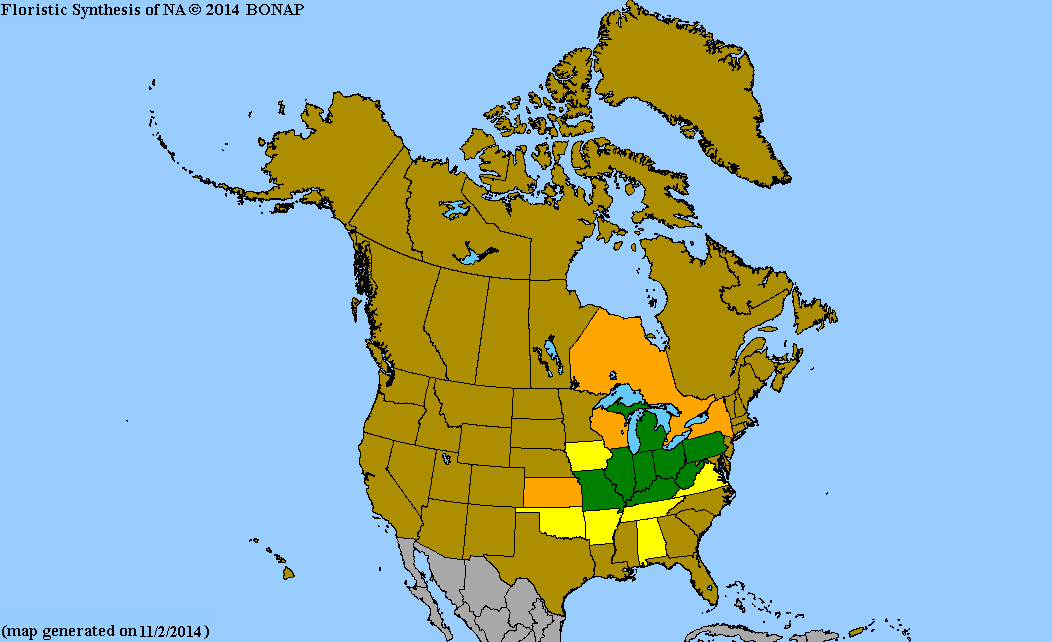
Map courtesy of The Biota of North America Program.
Map color key
Search Our Database: Enter any portion of the Scientific, Common Name, or both.
Do a general Google search of the entire site:
#ad
 Follow USWildflowers on Twitter
| | Site: Reflection Riding, Hamilton County, TN Date: 2011-April-08 | Photographer: Gerald C. Williamson
Nikon D60
Tamron SP 90MM f/2.8 AF Macro | | While Collinsia verna appears to have 4 corolla lobes (petals) it actually has 5. There are 2 white upper lobes, and 3 blue lower lobes. The middle lower lobe is a keel below the 2 bright blue lobes. The stamens and style are contained in the keel. | | 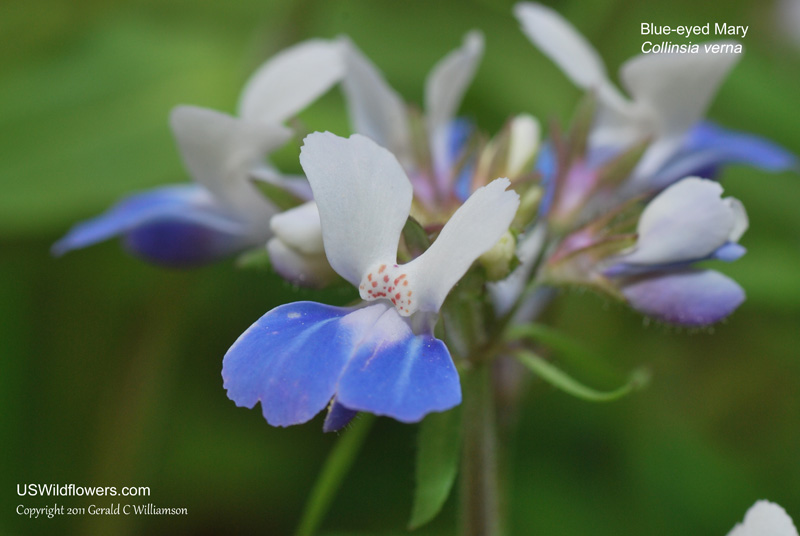
| | Site: Reflection Riding, Hamilton County, TN Date: 2011-April-08 | Photographer: Gerald C Williamson
Nikon D60 | | The plant is 6" to 16" tall with toothed, opposite leaves on a usually pubescent stem, although the stem may be glabrous. The lowest leaves are petioled, and the upper stem leaves are sessile or may be clasping. The stem is terminated with a whorl of 4 to 6 blossoms, and there is usually a whorl of 1 to 6 axillary blossoms in the upper leaf nodes. The blossoms are subtended by a linear bract. Because the decreasing diameter of the series of inflorescences gives the appearance of a Chinese pagoda, some of the Collinsia species are called Chinese House rather than Blue-eyed Mary. | | Click on the photo for a larger image
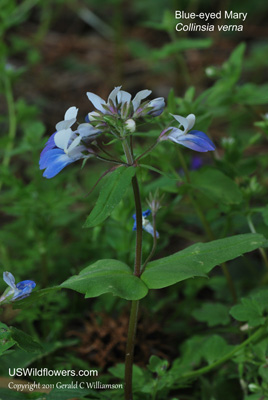
| | Site: Reflection Riding, Hamilton County, TN Date: 2011-April-08 | Photographer: Cindy Williamson
Nikon D40 | | Large colonies of Blue-eyed Mary can make a striking display. They inhabit moist, low areas in rich woodlands and meadows. | | Click on the photo for a larger image
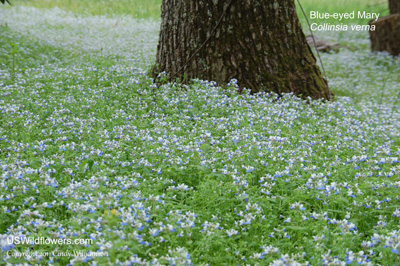
| | Site: Reflection Riding, Hamilton County, TN Date: 2011-April-08 | Photographer: Cindy Williamson
Nikon D40 | | Blue-eyed Mary sharing habitat with Yellow Trillium (Trillium luteum.) | | Click on the photo for a larger image
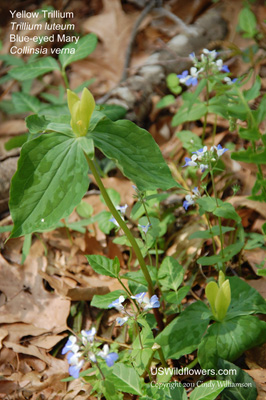
|
References used for identification and information:
|
|
| |
| #ad
|
|






